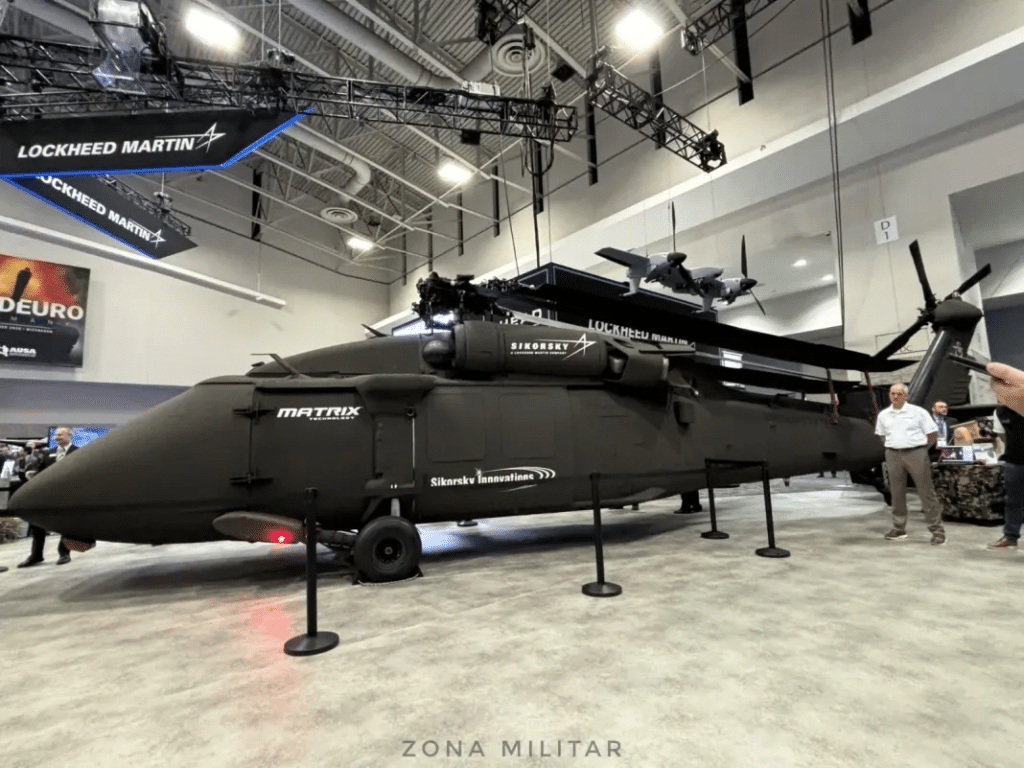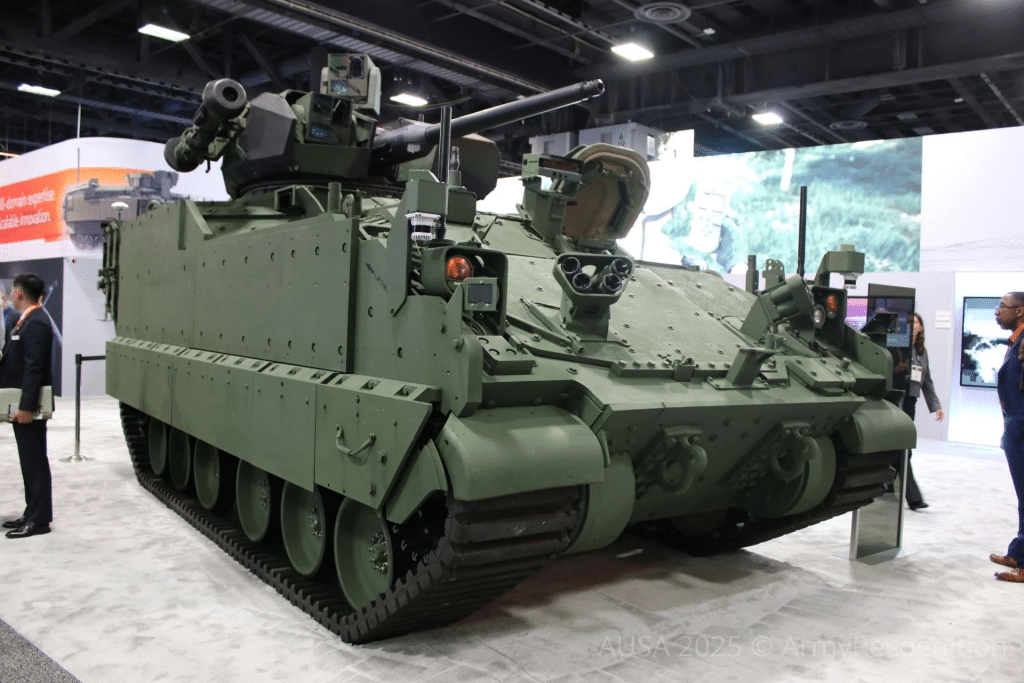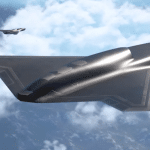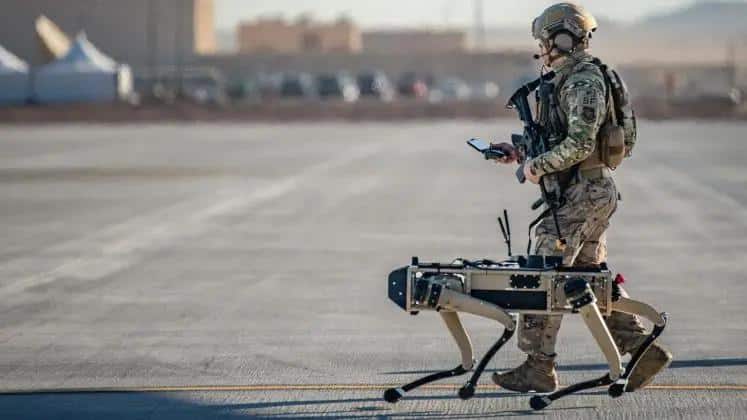The Association of the United States Army (AUSA) Annual Meeting remains the largest land power event in North America.
The 2025 edition, held under the theme “Agile, Adaptive, Lethal: Winning at the Pace of Change”, delivered a clear strategic message: future wars will be won not only by superior firepower, but by agility, digital integration, and rapid innovation.
Over three days, thousands of officers, defense industry leaders, and allied delegations gathered in Washington, D.C., to explore the technologies shaping the Army of 2030, from autonomous systems and counter-drone solutions to modular open architectures (MOSA) and multi-domain modernization.
Autonomy and robotics: toward a unmanned force
Autonomy has clearly become the defining trend of AUSA 2025.
Sikorsky, a Lockheed Martin company, unveiled a prototype of its U-Hawk, a fully autonomous variant of the iconic Black Hawk helicopter. Designed for unmanned logistics and ISR missions, the U-Hawk represents a major shift from “optionally piloted” to truly uncrewed capability, built to operate in contested environments.

On the ground, General Dynamics Land Systems (GDLS) showcased its latest MUTT XM robotic vehicle, now equipped with a Kongsberg RS6/XM915 20 mm weapon station. This compact UGV combines tactical mobility with mobile counter-drone defense, signaling the rise of an “augmented infantry” supported by autonomous teammates.

The goal is clear: extend the reach, survivability, and endurance of human units through interconnected aerial and ground systems capable of semi-autonomous operations, a concrete step forward for the Army’s Manned-Unmanned Teaming (MUM-T) doctrine.
Drone warfare and the new face of lethality
With the exponential growth of drone threats on the battlefield, counter-UAS solutions dominated discussions.
BAE Systems introduced an upgraded AMPV (Armored Multi-Purpose Vehicle) fitted with a 30 mm remote turret and programmable airburst ammunition, enabling it to engage drone swarms and reinforce close-combat lethality within mechanized formations.

Similarly, American Rheinmetall Defense displayed its Lynx XM30 infantry fighting vehicle and the Skyranger 30 air defense turret, both designed for modular integration of sensors and effectors across missions. These systems blur the line between air defense and ground combat, illustrating how future brigades will combine mobility with layered protection.
The outcome is a new paradigm of connected precision lethality, where detection, decision, and engagement unfold within a fully digitized, networked kill chain.
Sensors and electronic warfare
Another strong focus at AUSA 2025 was situational awareness and electronic warfare resilience, key enablers for the Army’s future digital battlefield.
ITT presented its latest ruggedized electronic subsystems and thermal-management modules aimed at improving system performance and reliability in demanding operational environments. These technologies underpin the next wave of sensor integration and electronic survivability across armored platforms and command networks.
More broadly, several exhibitors emphasized sensor fusion, open mission systems, and spectrum dominance, reflecting the Army’s intent to connect intelligence, surveillance, and targeting data into a single, resilient ecosystem. Whether in radar, electro-optical, or RF domains, the Army and industry are investing heavily in distributed sensing and low-latency data fusion, technologies still maturing but seen as essential to maintaining decision-making under electronic attack.
In future conflicts, information, not just firepower, will define superiority. The ability to sense, process, and communicate securely across contested networks is becoming as decisive as kinetic precision itself.
Digital agility and modular architectures
Agility, the defining theme of AUSA 2025, is increasingly expressed through digital integration and modular design rather than sheer platform mobility.
MOSA principles were highlighted across many modernization programs at AUSA 2025, reflecting their growing role, though full implementation remains a work in progress. By enabling plug-and-play integration of sensors, AI algorithms, and mission-command software, MOSA accelerates capability upgrades and allows coalition partners to operate on shared digital frameworks.
Manufacturers such as American Rheinmetall Defense, BAE Systems, and General Dynamics all emphasized open, scalable architectures in their latest vehicles and combat systems, a response to the Army’s demand for faster adaptation cycles and software-defined lethality. These designs move beyond traditional platforms, creating connected ecosystems designed to significantly shorten integration timelines, a long-term goal still in progressive implementation.
The message from AUSA 2025 is unmistakable: agility no longer depends on the speed of a vehicle, but on the speed of integration, the Army’s ability to reconfigure its digital force structure as rapidly as the threat evolves.
Toward the next generation of land warfare
Beyond its technology showcases, AUSA 2025 offered a strategic preview of where the U.S. Army is heading: distributed formations, autonomous logistics, resilient sensing, and real-time data fusion across the battlefield. Together, these advances define the contours of a multi-domain, adaptive, and sustainable approach to land warfare.
The triad “Agile, Adaptive, Lethal” marks a fundamental shift, from platform-centered modernization to ecosystem transformation, where open systems, robotics, and human-machine teaming become the foundations of battlefield dominance.
The challenge now is integration at speed, turning the prototypes unveiled in Washington into operational, interoperable realities before the end of the decade.





